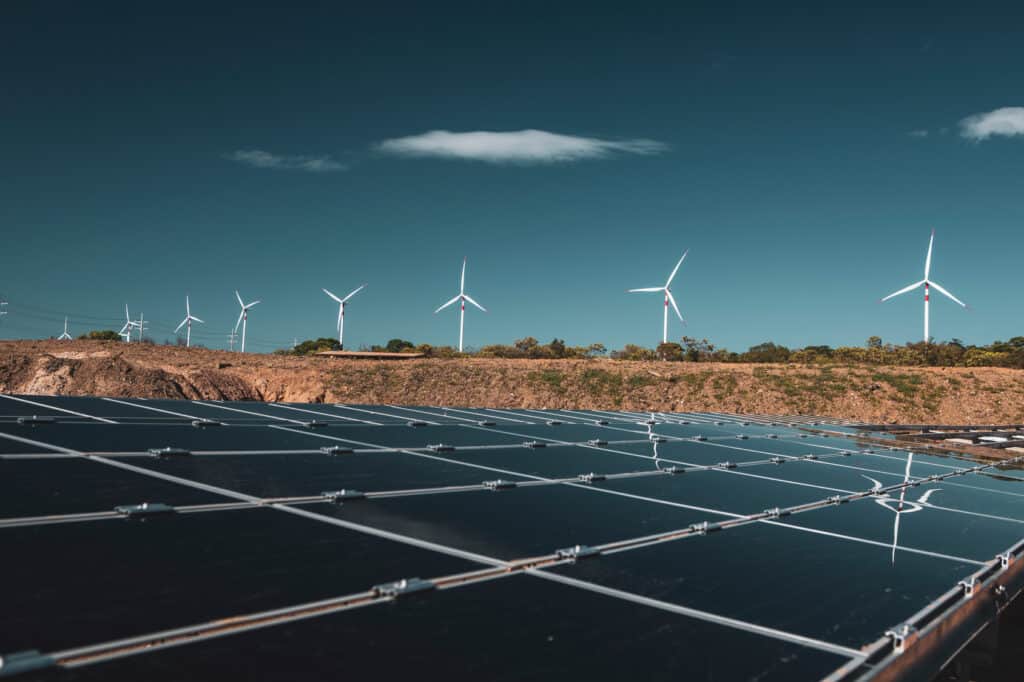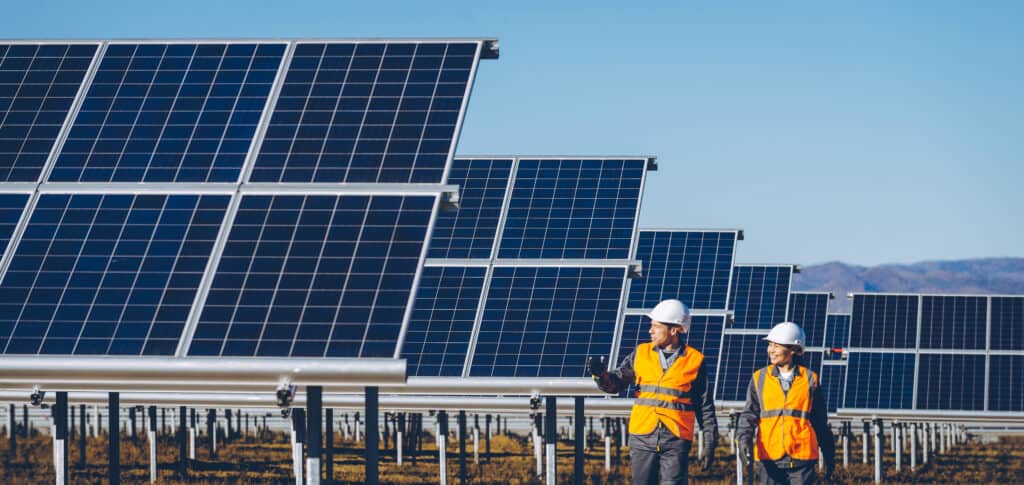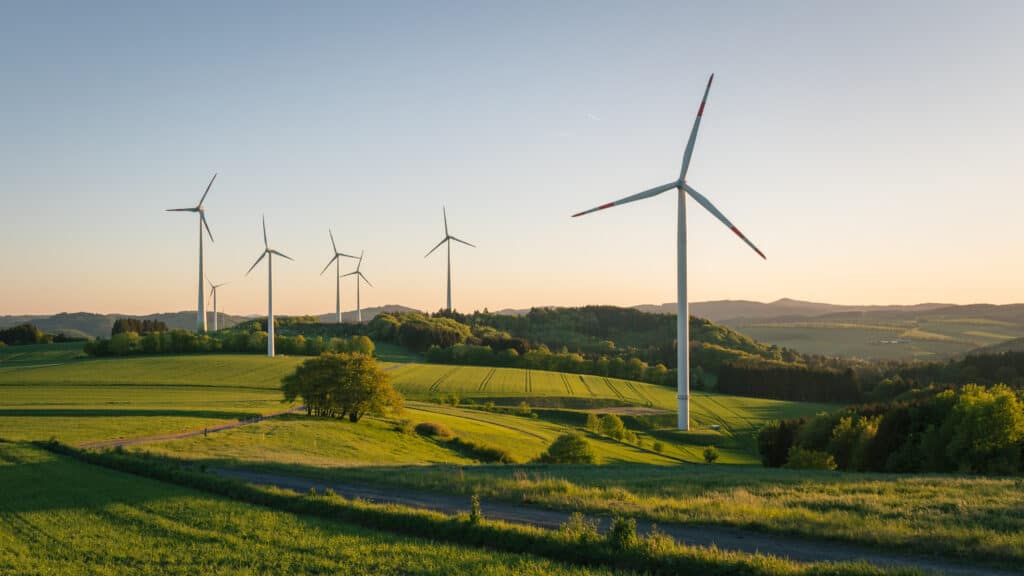
Australia, a nation blessed with abundant renewable energy resources, stands at a crucial juncture in the global fight against climate change. The country’s vast natural assets position it as a key player in the global shift from fossil fuels to renewable energy sources.
Australia has set an ambitious goal of achieving net-zero emissions by 2050, necessitating a rapid and profound transformation of its energy sector. While this transformation presents formidable challenges, it also offers substantial growth opportunities.
Anticipating the accelerated retirement of coal power stations, the Australian Energy Market Operator (AEMO) projected in its 2022 draft Integrated System Plan that by 2050, Australia will require ninefold the current renewable generation capacity, fivefold the distributed solar photovoltaic (PV) generation, and threefold the firming capacity and energy storage solutions.
These enhancements are essential to replace the retiring coal generation and do not even encompass in this article the emergence of a new domestic and export-oriented green hydrogen industry.
The renewable energy sector is currently experiencing a revival, with plenty of construction projects underway[1]. However, Australia’s path to a greener energy future is not without its share of challenges. EPC Contractors engaged in renewable energy projects face a complex web of risks that span socio-economic, political, logistical, and commercial dimensions.
In this article, we will delve into these risks and provide detailed insights into the factors impacting the successful execution of renewable energy projects in Australia.
Sources
[1] Large-scale solar energy is increasingly integral to the renewable energy landscape in New South Wales, Victoria, Queensland, South Australia, and Western Australia. Currently there are 42 operational solar farms (50MW+) and 34 under-construction solar farms (50MW+) (read more: https://www.canstarblue.com.au/solar/solar-farms-australia/ 30/07/2023). There are a total of 79 wind farms across all states (see more: http://listsellnegotiate.com.au/energy/wind-energy 20/07/2023)
An Overview of the Key Challenges for Renewable Energy Projects in Australia
The key challenges that EPC contractors in Australia are presented with for renewable energy projects in Australia include:
- Grid challenges in solar and wind projects
- Climate factors impacting renewable energy projects
- Land challenges for solar farms
- Landowners for wind farms
- Access issues in wind farm projects
- AEMO (Australian Energy Market Operator) and Network Service Provider risks
- Developer Approval (DA) and design challenges
- Commodity escalation challenges
- Pandemic and cultural heritage challenges
- Design changes caused by Geotechnical Conditions
- Labour challenges
- Regulatory and Policy Complexity
In addition, there are several logistical challenges, including:
- Road upgrade projects
- Port Delays
- Market conditions
- Storage constraints
- Development Approval (D.A.) Restrictions
- Challenges with transporting the labour force
- Accidents and flooding delays
- Insufficient access tracks
- Health Safety and Environment (HSE) incidents
Within this article, we will delve deeper into each of these key challenges for EPC contractors on Renewable energy projects.
Grid Challenges in Solar and Wind Projects
Solar power generation faces the notorious “duck curve” issue due to the misalignment between peak solar power production and peak electricity demand. This misalignment exacerbates the problems of grid instability and presents significant challenges for electricity grid operators who must balance supply and demand within strict tolerances. Conversely, during periods of low light, especially during peak electricity demand at dusk, solar farm power production drops. The absence of cost-effective large-scale energy storage solutions limits the ability to store surplus electricity for later use. This supply-demand gap is a significant hurdle in fully harnessing solar energy’s potential.
One of the critical hurdles to wind farm development in Australia is the variation in wind speeds. Much like with solar power production, wind power generation is contingent upon environmental conditions. When the wind is calm, power generation drops off, whereas during gale conditions, wind turbines must be braked to prevent damage, also resulting in decreased power generation.
Climate Factors Impacting Renewable Energy Projects in Australia
Climate conditions affected both solar and wind projects to a significant extent. Notably, 2022 stood out as an unusually wet year in Eastern Australia, with rainfall surpassing typical seasonal norms.
The majority of projects in our dataset faced challenges related to flooding. Furthermore, it’s important to acknowledge concerns regarding commissioning delays associated with either excessive wind or insufficient sunlight, which can impact the performance capacity required to complete the commissioning process.
Land Challenges for Solar Farms and Landowners for Wind farms
The requirement for vast tracts of land poses a significant hurdle for large-scale solar installations in Australia. Suitable land near populated areas with high electricity demand is scarce and expensive. Geographical and environmental factors often render much of Australia’s land unsuitable for solar farms.
In contrast to solar projects, landowner-related issues significantly impact wind farm projects. Landowners frequently request changes to project elements like culvert crossings, track alignments, and earthworks, leading to delays and increased costs. These requested changes have ripple effects, causing significant delays, work disruption, and the need for continuous task resequencing.

Access Issues in Wind Farm Projects
Access issues had an impact on wind farm projects but did not affect the solar projects (the landowner access delays being excluded from this category).
The main cause of access delays typically stemmed from delays in transferring Wind Turbine Generator bases from third-party contractors, leading to interface risks between the OEM and civil contractor, resulting in altered and less efficient working methods. In some instances, access tracks were not upgraded to meet the Turbine Supply and Installation (TSI) contract requirements in terms of quality and dimensions.
The effectiveness of wind farms is often met with scepticism due to their perceived visual impact and noise generation. This criticism has led to ‘Not In My Back Yard’ (NIMBY) sentiment among locals, causing community resistance, preventing or delaying the installation of turbines, and thus impeding the progress of wind farm projects.
AEMO (Australian Energy Market Operator) and Network Service Provider
The AEMO and Network Service Provider connection risks are widely recognized, and additional instances of such risks include mandates for interim hold point testing imposed by TransGrid, delays in the approval of R1 package submissions by AEMO, discrepancies and insufficiencies in the RO (Resource and Obligation) studies, alterations to harmonic filter prerequisites, modifications in transformer impedance requirements, and challenges encountered in attaining the mandated transformer fault levels. Witness testing challenges have encompassed delays in GPS commissioning, setbacks in SCADA/PPC cold commissioning, as well as hindrances in hot commissioning which may be attributed to the limited availability of adequately qualified personnel in Australia.
Developer Approval (DA) and Design Challenges
Phased Developer Approval processes require meticulous design considerations. Minor oversights can lead to costly delays. Design changes, especially in pile design due to ground conditions, can impact project configurations. For instance, even minor oversights, such as inaccuracies in the angle of solar panel rotation, can result in the requirement for additional land and subsequently lead to significant delays within the DA process.
Commodity Escalation
Significant fluctuations in commodity prices, particularly those affecting PV module production, were substantially influenced by force majeure events and global hyper price volatility caused by the post pandemic era.
An incident at the Daqo Xinjiang polysilicon manufacturing facility on July 1, 2020, and flooding at the Yongxiang Polysilicon facility on August 18, 2020, triggered disruptions within global supply chains. Furthermore, COVID-19 outbreaks in China’s Xinjiang Uyghur Autonomous Region resulted in a 50% reduction in Chinese polysilicon production capacity. As a consequence, PV module manufacturers were unable to deliver panels at previously agreed-upon prices. This placed the burden of cost escalation squarely upon Australian EPC contractors, as Chinese manufacturers declined to honour their prior commitments.
Pandemic and Cultural Heritage
The COVID-19 pandemic had multifaceted impacts on renewable energy projects, affecting supply chains, logistics, labour deployment, and regulatory measures. Notably, the ubiquitous influence of the COVID-19 and the post- pandemic era remain one of the foremost grievances affecting all projects. Notable entities, including Nobel Power and Original Equipment Manufacturers (OEMs), encountered hindrances in their ability to physically attend project sites for the purpose of witnessing commissioning activities, thereby leading to delays.
Additionally, considerations related to cultural heritage, although relatively rare, can lead to project delays. A substantial proportion of EPC Contracts came into effect subsequent to the completion of cultural heritage surveys. We are cognizant of situations where cultural heritage discoveries necessitated the relocation of entire access tracks, resulting in augmented cut and fill volumes and heightened demands for imported aggregate.
Design changes caused by Geotechnical Conditions
Notably, our observations revealed an ever-evolving pile design due to the discovery of challenging ground conditions, rendering pile driving unviable. This iterative process of geotechnical adjustments led to modifications in the configuration of solar projects, were influenced by alterations in panel design, specifically in terms of their 5.1-meter pitch and 8-degree azimuth.
Labor Challenges
Labour productivity losses are the most impactful factor causing delays in renewable energy projects in Australia. Our dataset reveals a recurring pattern of delays in mobilising labour and subcontractors, often stemming from difficulties in sourcing adequate labour.
It is important to note that renewable energy projects in Australia often compete with the thriving infrastructure sector for labour resources. Infrastructure projects, frequently situated in urban areas, offer higher remuneration.
Regulatory and Policy Complexity
Regulatory bottlenecks are another challenge faced by the renewable energy industry in Australia. The regulatory environment is complex and varies largely from state to state. In some cases, inconsistency in policies restricts incentive programs, rendering investments in renewable energy projects less appealing.
Logistic Challenges
These logistic challenges encompass a wide range of factors, including:
Road Upgrades
Upgrading roads to accommodate the transportation of turbine blades (Wind Turbine Generators (WTGs) in Northern Queensland, near Gladstone has been a notable logistical challenge.
Port Delays
Delays in berthing and issues related to stevedores and unions at ports have contributed to logistic delays.
Market Conditions
Delays caused by factors such as COVID-19 and market conditions have led to increased logistics and shipping costs.
Storage Constraints
Logistic challenges include constraints related to storage, both at ports and on-site.
Development Approval (D.A.) Restrictions
Restrictions imposed by development approvals (D.A.) on vehicle movements, especially when moving PV modules to the construction site, have been a source of delays. Approval and other delays associated with Transport and Main Roads (TMR) have compounded the logistic challenges. It is essential to highlight that both the EPC Contractor and the Developer have limited influence over the road upgrade process and lack the means to recover project losses from TMR.
Transporting the Labor Force
Challenges associated with transporting the labour force to remote construction sites, including issues with transportation logistics and the absence of suitable camps, have impeded progress.
Accidents and Flooding
Delays have resulted from accidents and flooding that hindered road access and transportation.
Insufficient Access Tracks
Insufficient access tracks for transportation have been a recurring logistic challenge.
Health, Safety, and Environment (HSE) Incidents
Incidents related to health, safety, and the environment, including unloading problems and accidents on local roads, have disrupted project timelines.

Collaboration with EPC Contractors Australia
Years of collaboration with key EPC Contractors and developers have provided a multifaceted database to gain a better understanding of the current challenges confronting EPC Contractors. This comprehensive article elucidates the prevalent risks encountered by EPC Contractors in renewable energy projects throughout Australia. A subsequent article will delve into the strategic approaches and tactics for addressing each category of these challenges.
Where Lewis Woolcott Comes In
At Lewis Woolcott, we provide big-picture consulting and visibility for all sectors. We’ve worked with many EPC Contractors in Australia to successfully navigate the myriad of complex challenges faced on renewable energy projects Australia-wide and globally.
While recent years have seen an increase in the challenges faced by EPC Contractors in Australia in Renewable Energy projects in Australia and beyond, even the most complex and major projects have navigated these challenges successfully under our care.
If you’d like to gain our assistance for your complex projects in Renewable Energy within the Australian market or global markets, don’t hesitate to get in touch with our team. We have a proven track record of successful projects and have a history of significant growth in project clarity and outcomes. You can learn more about our accolades and expertise on our About Us page.
Contact us at Lewis Woolcott and let’s talk about your next EPC projects and how we can help you anticipate, navigate and overcome the biggest challenges faced in the industry today.